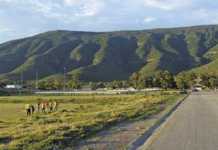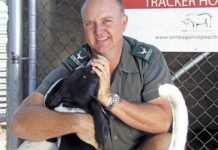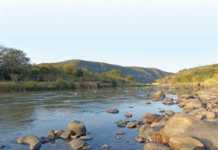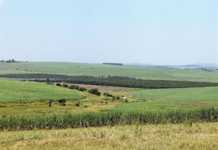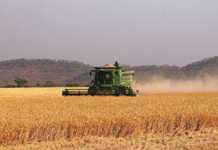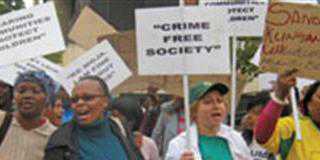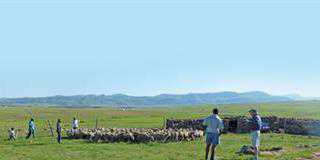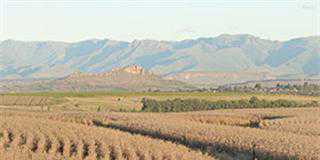The former Mnquma magisterial district, now a local municipality, includes Butterworth and Kentani. Wards 27, 28 and 29, where I was offered survey work, extend along the Wild Coast between the Kei River and Mazeppa Bay and about 40km inland. The cash incentive was obvious, particularly before the festive season, but what really excited me was the opportunity to get to know what has to be one of the most beautiful coastlines on earth. The survey would include 92 villages, which I’d get to know well, and transecting and finding connecting roads between them.
I decided to start with the areas closest to East London, Wards 29 and 28. I was well into Ward 29 when I was forced to start thinking agriculturally about the area – I was spending most of the day driving across long-abandoned land around the villages, getting tossed around my Landy’s cab.
The soil had obviously settled over time so it wasn’t clods that were the problem, but millions upon millions of molehills. The utter discomfort of grinding over them all day made me realise how many abandoned lands there were in this area, literally as far as the eye could see. Whether it was the moles that drove me, or the absolute despair I felt looking at all this vacant land, on a day off I headed for the Department of Agriculture (DoA) in Butterworth to find out if there are or were any agricultural projects in the Mnquma district.
With a list of projects I could do my own investigation since I was already working from village to village. If anything was there, I would see it, and I was hoping to find cash cropping or vegetable production.
Quest through the DoA
I arrived at the first of Butterworth’s two DoA buildings and eventually found an office with someone inside, a friendly woman sitting in front of a two-bar heater, though it must have been 27ºC outside. I introduced myself and explained I was looking for information on agricultural projects in the district. She promptly ushered me to two gentlemen in another office. After a quick discussion they unanimously decided I was better off going to Butterworth’s other departmental office, to which they happily directed me.
The second office was, ironically, situated right next to a squatter camp, and children came rushing up to me begging for food. On entering the derelict building I was met by another friendly woman with a two-bar heater, went through my story again and was promptly escorted deeper into the building.
En route I received a marriage proposal from the friendly lady and, upon declining, was shown into an office where six gentlemen were sitting. Their smart designer clothes seemed somewhat out of place against the backdrop of peeling walls. I went through my story again and was greeted with stunned silence. After at least half an hour of bargaining and begging, I received my list. The most important point of the discussion was about the photos I was going to take of them and which poses they wanted to strike.
Only a few of the listed projects fell within my working wards. Desperate for more information, I took a chance and went to Kentani in search of another DoA office. Fortunately I found one, another derelict building, again with two friendly women sitting in front of a two-bar heater and nobody else available. They tried to phone various officials, but none were in the area. They were all on important business in other parts of the country. I promptly went and bought myself an ice cold quart of beer. The following day I made up my mind to persist without quotes from important people, and simply base my article on what I’ve seen with my own eyes.
Wasted potential
I’d surveyed 46 villages, completed wards 29 and 28, and had yet to see any agricultural activity. I estimated only 2% of homes in all these villages had small vegetable gardens for self-use. Besides these, nothing was growing but open space, with long stretches of abandoned land, only identifiable by seemingly endless contours and molehills.
As part of the survey I was expected to assess depth of topsoil to bedrock. In most cases, the topsoil depth on ridge crests is around 0,5m. In the valleys and bottomlands it exceeds 2,2m, the length of my auger. The soil types are typically deep black loam and heavy clay, going into sabunga and then dolomite rock. Yet there’s no agricultural activity, despite every farmer’s dream – coastal rain and abundant rivers and streams. Why?
This question was amplified by the radio, which kept reiterating the threat of global economic collapse and food price increases.
Clearly the current government thinks the Transkei population can weather the storm, and doesn’t believe in prevention, planning or forward-thinking. As there are no jobs in this area, I estimate at least 95% of the population is unemployed and survives primarily on government grants.
The government seems to believe it can afford to continue paying these hundreds of thousands of people indefinitely – it has more faith in our economic stability than I do. If grants were cut off, there’d be mass starvation.
Projects a mirage
There are 46 villages in wards 28 and 29. The DoA’s list says Debese village has a fencing, crop and irrigation project, of which I saw nothing. Even the villagers were perplexed when I asked about it. Not only is nothing growing, but the only thing resembling irrigation is a borehole pump that provides drinking water to the Debese village and four others that regularly run dry.
I’d told myself I wouldn’t contact the department, but this was becoming too shocking to let pass without comment from an official. I tried to phone Mr Sleefo, manager of coordinating projects in Mnquma, but he simply wouldn’t return my calls. Desperate to find something growing, I searched beyond my wards to Teko Springs village in Mnquma (ward 31) where I found a Multispan structure in the middle of nowhere and, you guessed it, not a tomato in sight.
The manager from the DoA, a Mr Foytjie, was unavailable to meet me there as he had urgent business elsewhere, so I managed to find the nkosi (chief) of the village to fill me in. Nkosi Zonwabele Dyantyi, chief of Teko since 1989, was matter-of-fact about the Amagwelani Community Project.
“The community received R2,6million in funding from the Development Bank of Southern Africa (DBSA) in 2003 to start this tomato project,” he explained. “But we ran out of money and couldn’t buy fertiliser and tomato plants, so we’ve only planted once, in 2003. We’re currently approaching the Amatole district municipality for more funding to kick-start the project again. The project and funds are managed by a board of seven trustees, of which I am a member.”
No faith in the future
I wonder about land reform, and whether it’s truly about the land or just about politics, continually digging up the past to evade the real issues, the tragedies such as this one currently unfolding. As I write this, I’m busy with my last ward and hope to report on it more positively. But from what I’ve seen up to this point, I’m not holding my breath.


